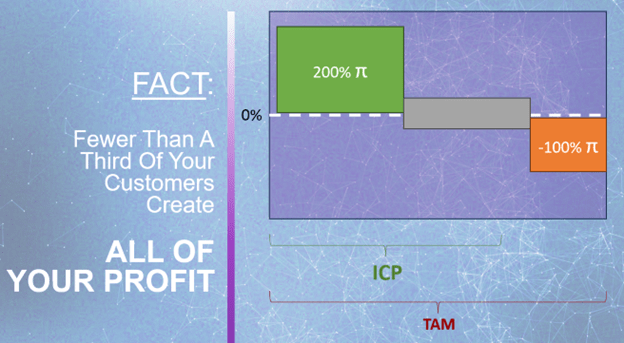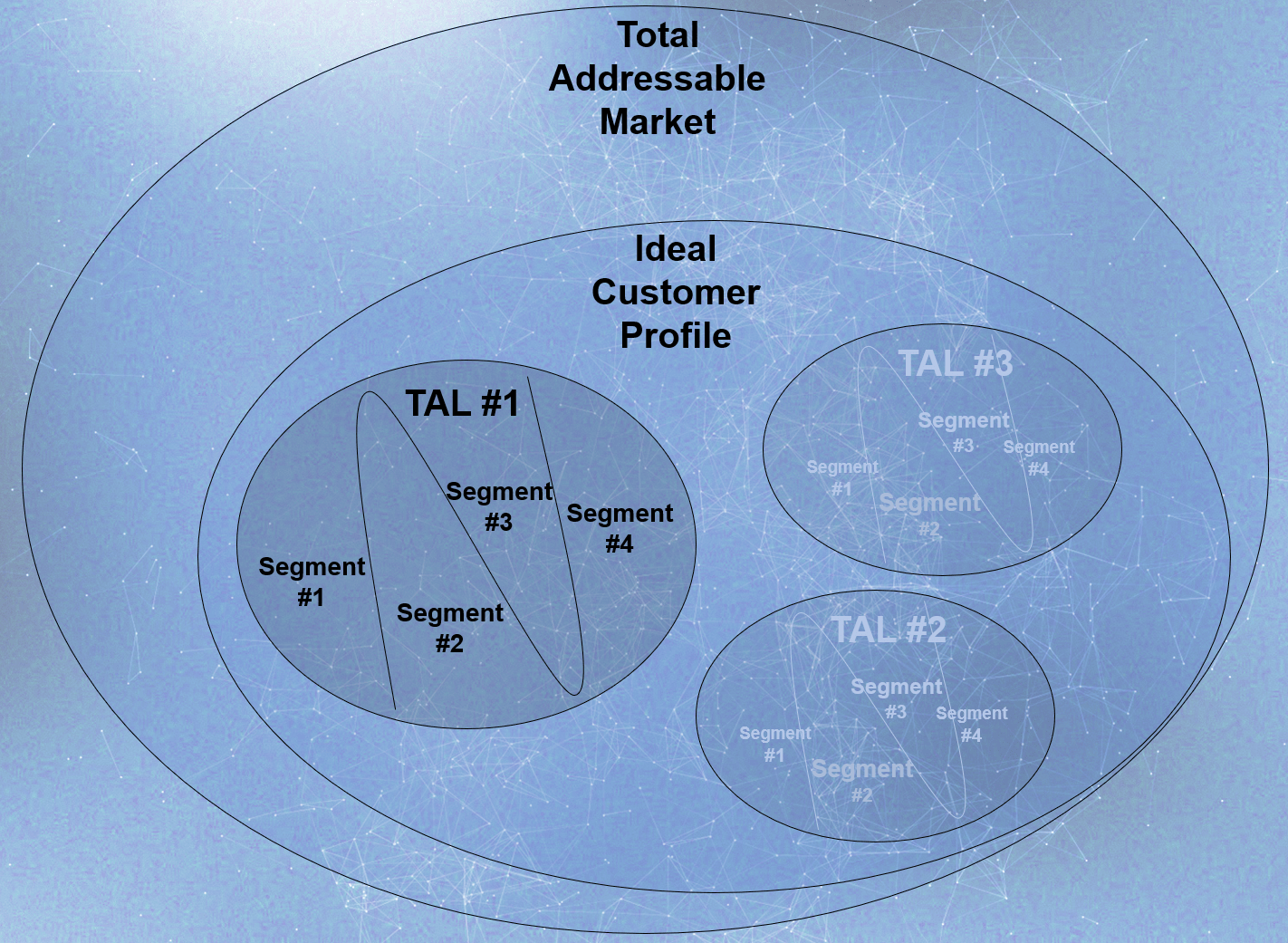Target Account List
Target Account Lists
Not all customers are created equal.
On average, only a third of customers create nearly all profit, and more than 20% of your customers consume most of that profit; this is the difference between ICP and TAM.
An accurate ICP reflects this reality, identifying those customers who truly need what you have, are willing to pay more, and stay longer. Finding, prioritizing, and attracting this elite group of targets is a key indicator of high-performance account-based strategies.

Your Target Account List is Wrong
However, Ideal Customers don’t fit within one profile. Because of this, we have a conundrum with the idea of a “Target Account List” or that the ICP is the list. There can only be one list if you only have one version of an ideal customer… one industry, one firm size, one profile of technographics, one persona.
If you continue down the path of maintaining one target account list, without cohort analysis and segmentation, you can’t message and target your accounts appropriately. This pale world looks like the featured image in this blog post… when you treat your targets generically, you create a generic perception of what you’re selling. Pitching your solution from a general or generic perspective demonstrates to all of your audience a disconnect between your solution and their needs.
Dr Seuss Takes On ICP Strategy…
“Cohorts of Sorts”
In the land of B2B, so vast and so wide,
cohorts of sorts is where insights abide.
Not one profile fits all, oh no, that’s too plain,
For each customer’s unique, in their own domain.
There’s techies and execs, and firms big and small,
To lump them together? Oh, that won’t do at all!
Segment and tailor, make your message ring true,
For a one-size-fits-all just simply won’t do.
When your message is generic, it’s like a bland dish,
But tailor it right, and you’ll fulfill every wish.
So remember, dear friends, in your B2B quest,
With “Cohorts of Sorts”, you’ll surely impress!
When you treat all of your audiences the same, you assume a generic set of needs… and that conveys the perception that you have an undifferentiated, generic solution.
Consider these points:
- If your solution rests in an ecosystem with adjacent technologies, would your prospects who use particular adjacent technology find value in knowing that you would work seamlessly within their tech stack?
- If you sell your solution into different buying groups, each driven by different buyer personae, would prospects find value in learning about your solution from the vantage point of the needs of their persona/role?
- If your organization has a new case study from a particular industry, would the clients and prospects from that industry want to know about it?

Segments make the connection…
Segmentation is the linchpin in managing large and multifaceted Ideal Customer Profiles (ICPs). By dissecting the ICP into distinct/homogeneous segments, you can fine-tune your account-based strategies to address each segment’s unique characteristics and needs. This approach gives you a new capability to precision-tune your target prioritization, allocating resources to the most lucrative opportunities.
As well, segmentation catalyzes metrics-driven learning. It enables you to assess the effectiveness of messaging and channel strategies more accurately. By closely monitoring performance metrics across different segments, you can identify what resonates best with each cohort, leading to continuous messaging and channel optimization improvement.
Just in time to conclude on time…
ICP segmentation and cohort analysis aren’t new ideas. It, like many other strategies of personalization and integrated marketing campaigns, existed before the B2B Marketing acronym of the day. Learning from generations of successful marketers before us, the approach laid out here is a must-have and is a crucial indicator of high-performance programs.
Segmentation is not merely a component of an account-based strategy but the cornerstone determining its effectiveness. By embracing a segmented approach, businesses can ensure that their account-based strategies are comprehensive and highly effective in driving tangible business outcomes.


